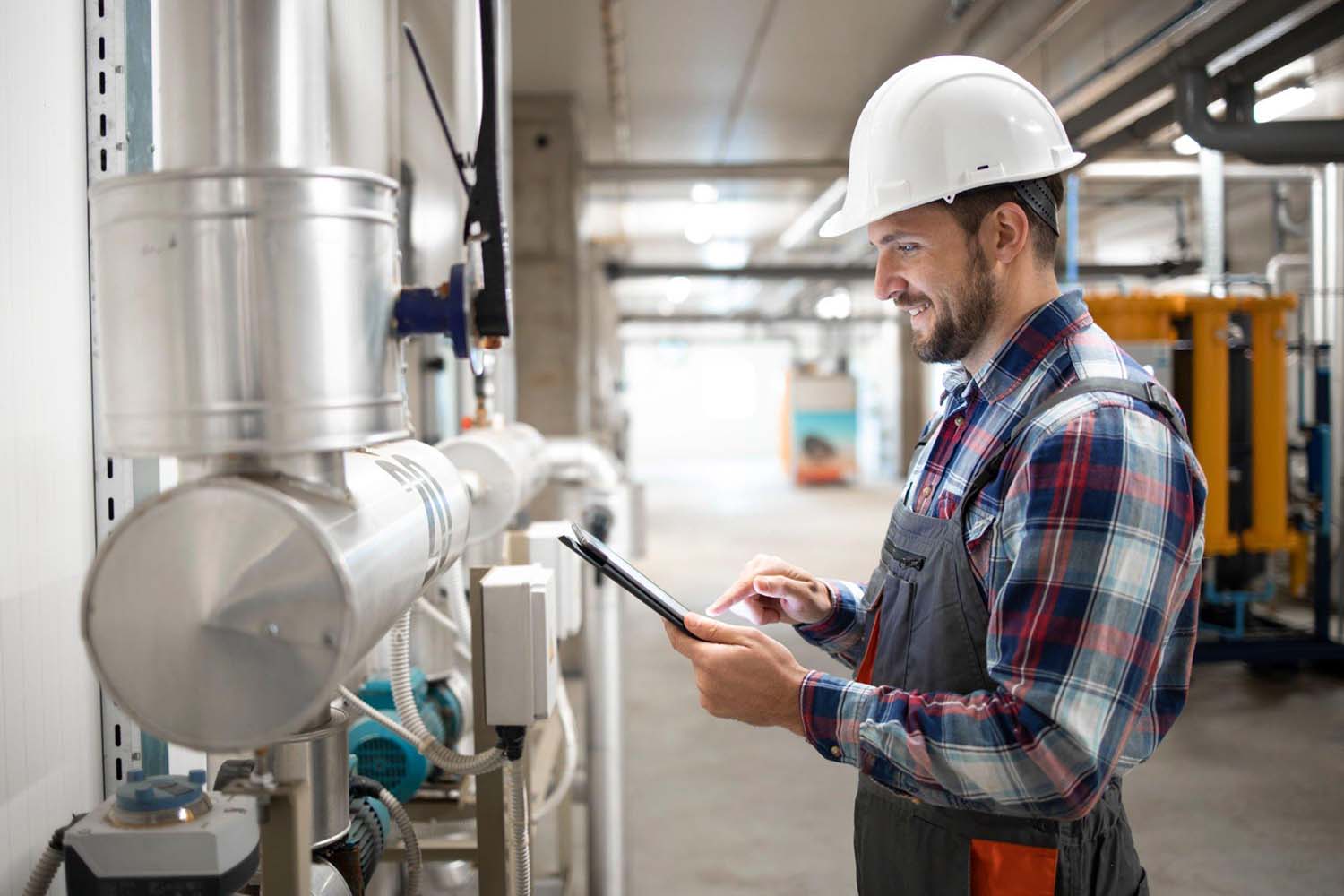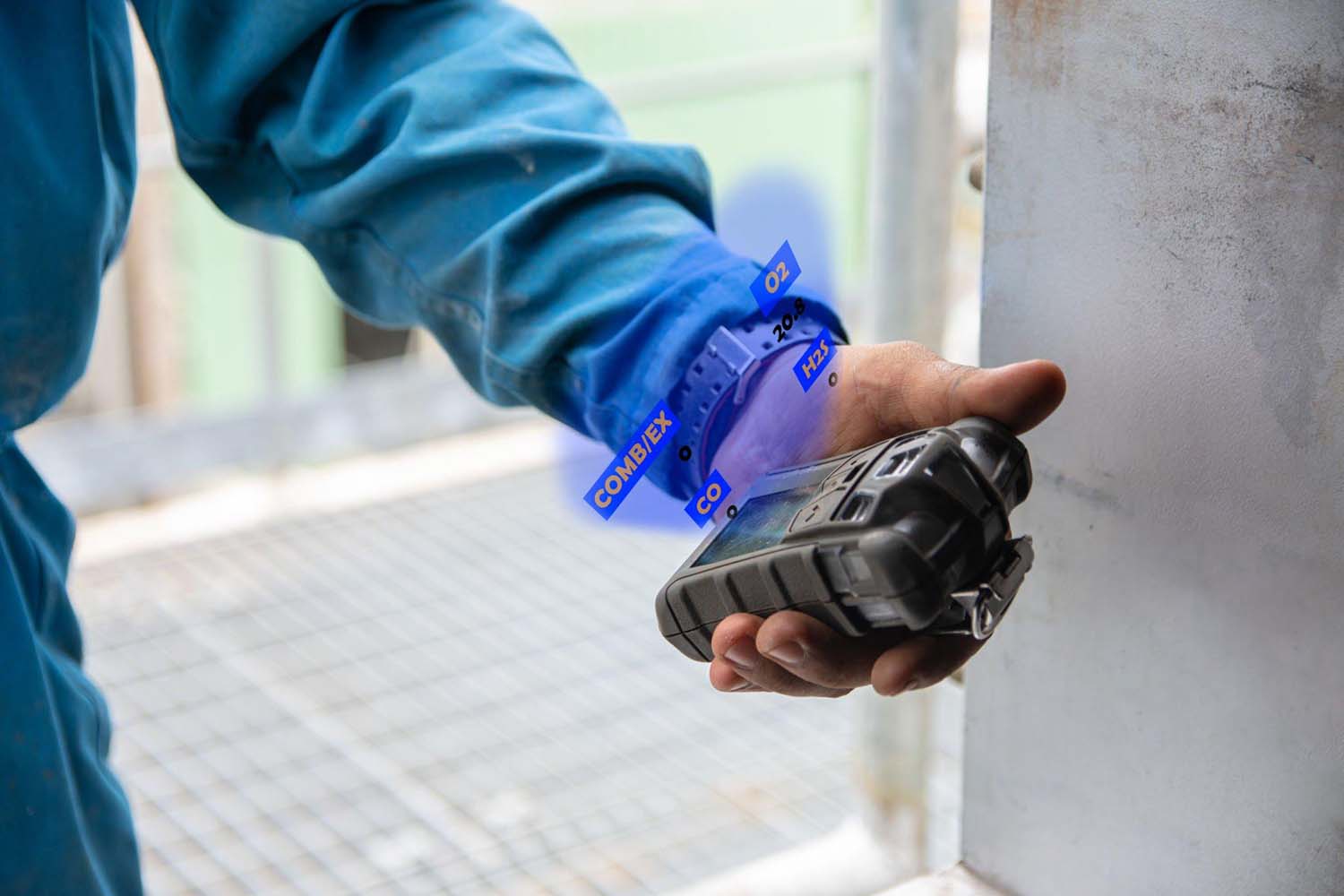In today’s world, where industries continue to push boundaries and laboratories innovate at an unprecedented pace, safety remains a top priority. Whether it’s an oil refinery, a chemical manufacturing plant, or a confined laboratory space, the presence of gases can pose significant risks to human health and property. This is where gas detection equipment steps in as a crucial safeguard, providing early warning and essential information about potentially hazardous gas levels in the environment.
Gas detection equipment plays a pivotal role in protecting lives, preventing accidents, and maintaining a secure working environment. By leveraging advanced sensor technologies and intelligent monitoring systems, these devices offer a crucial line of defence against a range of gases, from combustible and toxic substances to oxygen levels and volatile organic compounds (VOCs).
In this blog post, we delve into the world of gas detection equipment, exploring its significance, functionality, and diverse applications across various industries. Join us as we uncover the key features of these devices, the types of sensors employed, and how they contribute to mitigating potential risks.
Throughout the article, we will shed light on portable gas detectors, fixed gas detectors, and area monitors, each tailored to specific needs and environments. We’ll discover how these devices work hand in hand with advanced sensor technologies such as catalytic bead sensors, electrochemical sensors, infrared sensors, photoionisation detectors (PID), and semiconductor sensors.
Moreover, we will emphasise the importance of gas detection equipment in providing timely alerts, enabling rapid response measures, and preventing accidents that can have severe consequences. From the detection of combustible gases to monitoring toxic substances and ensuring optimal oxygen levels, these devices are indispensable tools in the realm of safety…
Gas detection equipment refers to devices and systems designed to detect the presence of various gases in the environment. These devices are crucial for ensuring safety in industrial settings, laboratories, and other areas where the presence of gases can pose a risk to human health or property.
Gas detection equipment typically consists of sensors or detectors that are capable of identifying and measuring the concentration of specific gases in the air. The sensors can be designed to detect a wide range of gases, including combustible gases, toxic gases, oxygen levels, and volatile organic compounds (VOCs). Common gases that are monitored include methane, carbon monoxide, hydrogen sulfide, ammonia, and various hazardous chemicals.

What is Gas Detection Equipment?
Gas detectors can be categorised into several types:
Portable gas detectors: These handheld devices are compact and can be carried by individuals to monitor gas levels in their immediate vicinity. They are commonly used by emergency responders, industrial workers, and firefighters.
Fixed gas detectors: These are installed in specific locations within a facility to provide continuous monitoring of gas concentrations. They are typically connected to a central control system and can trigger alarms or initiate safety measures when gas levels exceed predefined thresholds.
Area monitors: These devices are designed to monitor gas levels in a specific area or zone. They are commonly used in large facilities or confined spaces where gas leaks can occur.
Gas detection equipment utilises different types of sensors depending on the target gas. Some common sensor technologies include:
Catalytic bead sensors: Used for detecting combustible gases.
Electrochemical sensors: Used for measuring the concentration of toxic gases and oxygen levels.
Infrared sensors: Used for detecting hydrocarbons and certain gases with specific infrared absorption characteristics.
Photoionisation detectors (PID): Used for detecting VOCs and other gases with ionisation potentials below the energy of the UV lamp used in the detector.
Semiconductor sensors: Used for detecting various gases, including carbon monoxide, hydrogen sulphide, and flammable gases.
Gas detection equipment plays a vital role in maintaining a safe working environment by providing early warning of gas leaks, allowing for prompt response and preventive measures to prevent accidents or exposure to harmful gases.
Portable Gas Detectors
Portable gas detectors are compact and handheld devices that serve as personal safety companions in environments where gas hazards may exist. These devices are designed to be easily carried by individuals, providing real-time monitoring of gas concentrations in their immediate vicinity. Whether it’s an industrial site, a confined space, or an emergency response scenario, portable gas detectors play a crucial role in ensuring the safety and well-being of workers and responders.
Equipped with advanced sensor technologies, portable gas detectors can detect a wide range of gases, including combustible gases, toxic substances, oxygen levels, and volatile organic compounds (VOCs). By continuously monitoring the surrounding air, these devices are capable of alerting users to the presence of hazardous gases, enabling them to take appropriate actions to mitigate risks.
One of the key advantages of portable gas detectors is their mobility and ease of use. These devices are lightweight, ergonomic, and designed for intuitive operation, making them practical for individuals who need to move around different areas within a facility or respond to dynamic situations. With their compact size, they can be conveniently clipped to a belt, attached to clothing, or carried in a pocket, ensuring constant personal monitoring and safety on the go.
Portable gas detectors are equipped with visual and audible alarms to alert users when gas concentrations reach or exceed predefined thresholds. These alarms are crucial in providing immediate warnings, allowing individuals to quickly evacuate the area, don personal protective equipment, or initiate emergency response protocols. The prompt and reliable detection capabilities of portable gas detectors can make a significant difference in preventing accidents, minimising exposure to harmful gases, and saving lives.
Fixed Gas Detectors
Fixed gas detectors are essential safety devices installed in specific locations within facilities to provide continuous monitoring of gas concentrations. Unlike portable gas detectors, fixed gas detectors are stationary and designed to monitor gas levels in a particular area or zone. These devices are commonly used in industries where the potential for gas leaks or releases is high, such as chemical plants, refineries, manufacturing facilities, and storage areas.
The primary purpose of fixed gas detectors is to provide early detection of hazardous gases and trigger appropriate safety measures to protect personnel and assets. They are typically connected to a central control system, which receives and analyses data from the detectors, and can initiate alarms, activate ventilation systems, or trigger automatic shutdowns of equipment if gas levels exceed predetermined thresholds.
Fixed gas detectors utilise advanced sensor technologies to accurately measure gas concentrations. These sensors are capable of detecting a wide range of gases, including toxic substances, combustible gases, oxygen levels, and VOCs. The selection of sensor type depends on the specific gas being monitored, ensuring optimal sensitivity and accuracy.
One of the key advantages of fixed gas detectors is their ability to provide continuous monitoring. Unlike portable devices, which rely on the presence of individuals in the vicinity, fixed detectors operate 24/7, ensuring round-the-clock surveillance and protection. This continuous monitoring helps to identify potential gas leaks or releases at their earliest stages, allowing for timely response and mitigation, thereby preventing accidents, equipment damage, or environmental hazards.
Fixed gas detectors are strategically placed in areas where gas leaks are most likely to occur, such as storage tanks, pipelines, or process equipment. By monitoring these critical locations, these detectors act as a first line of defence, enabling swift action to be taken before a hazardous situation escalates. They provide peace of mind to workers and create a safer environment by reducing the risk of gas-related incidents and promoting proactive safety measures.
Gas Detection Area Monitors
Gas detection area monitors are specialised devices designed to monitor gas levels in a specific area or zone, providing comprehensive coverage and ensuring the safety of larger spaces. These monitors are commonly used in environments where gas leaks or releases can occur, such as refineries, petrochemical plants, mining sites, and confined spaces like storage facilities or underground tunnels.
The primary function of gas detection area monitors is to continuously monitor gas concentrations across a defined area, providing early warning and enabling prompt response to potential hazards. These devices are strategically placed in locations where gas leaks are most likely to happen or where gases can accumulate, ensuring comprehensive coverage and maximising safety.
Gas detection area monitors utilise advanced sensor technologies to detect a wide range of gases, including toxic substances, combustible gases, oxygen levels, and VOCs. The number and types of sensors can vary depending on the specific application and gas hazards present in the area. By using multiple sensors, these monitors can provide a comprehensive analysis of the gas environment, identifying the presence of different gases and their concentrations.
One of the key advantages of gas detection area monitors is their ability to cover larger areas and provide a broader scope of gas detection. Instead of relying on individual portable or fixed detectors, which may have limited coverage, area monitors offer a more comprehensive solution. This is particularly important in expansive industrial sites or confined spaces, where gas hazards may not be confined to a specific point but can spread throughout the area.
Gas detection area monitors are typically connected to a central control system or network, allowing for real-time monitoring, data analysis, and alarm management. They can trigger visual and audible alarms, relay alerts to safety personnel, and provide continuous monitoring data for analysis and incident response. These monitors can also be integrated with other safety systems, such as ventilation or emergency shutdown systems, to ensure a coordinated and effective response to gas-related incidents.

Why Should Businesses Use Gas Detection Equipment?
Businesses should use gas detection equipment for several compelling reasons, primarily centred around safeguarding the health and safety of employees, protecting assets, and maintaining regulatory compliance. Let’s explore the key reasons why businesses should prioritise the implementation of gas detection equipment:
Personnel Safety: The foremost reason for using gas detection equipment is to ensure the safety and well-being of employees. Many gases pose serious health risks, ranging from asphyxiation and respiratory problems to poisoning and even fatalities. By continuously monitoring gas concentrations, businesses can promptly detect the presence of hazardous gases and take immediate action to protect employees from exposure, such as evacuating the area, initiating safety protocols, or providing personal protective equipment.
Accident Prevention: Gas leaks or releases can lead to catastrophic accidents, fires, explosions, or chemical reactions, causing severe damage to property and endangering lives. Gas detection equipment serves as an early warning system, enabling businesses to identify gas leaks in their early stages and take proactive measures to prevent accidents. By promptly detecting gas hazards, businesses can implement safety protocols, initiate emergency shutdowns, or activate ventilation systems to mitigate risks and avoid potential disasters.
Regulatory Compliance: Many industries are subject to strict regulations and safety standards concerning gas monitoring and detection. Compliance with these regulations is not only crucial for the well-being of employees but also for avoiding legal consequences and penalties. By using gas detection equipment, businesses can demonstrate their commitment to safety and fulfil their obligations to regulatory bodies, ensuring a safe working environment and maintaining compliance with relevant industry standards.
Asset Protection: Gas leaks can damage equipment, machinery, and infrastructure, resulting in costly repairs, production downtime, and financial losses. Gas detection equipment plays a vital role in safeguarding assets by providing early detection of gas leaks. By promptly identifying gas hazards, businesses can take preventive measures, shut down equipment if necessary, and minimise the potential damage to assets, thereby reducing downtime and preserving business continuity.
Reputation and Trust: Prioritising the safety and well-being of employees and stakeholders sends a strong message about a business’s commitment to responsible practices. Implementing gas detection equipment demonstrates a proactive approach to safety and can enhance the reputation and trustworthiness of the business among employees, customers, and the broader community. A safety-conscious business fosters a positive work environment and can attract and retain top talent.
In summary, businesses should use gas detection equipment to prioritise employee safety, prevent accidents, comply with regulations, protect assets, and build a positive reputation. By investing in advanced gas detection technology and implementing robust safety measures, businesses can create a secure working environment, reduce risks, and demonstrate their commitment to the well-being of their employees and the community.
In Conclusion
Gas detection equipment serves as a crucial safeguard in various industries, laboratories, and workplaces where the presence of gases can pose serious risks. From toxic substances and combustible gases to oxygen levels and volatile organic compounds, these devices play a vital role in maintaining a safe working environment.
In our latest blog post, we delve into the world of gas detection equipment, exploring its significance, functionality, and diverse applications. We shed light on portable gas detectors, fixed gas detectors, and gas detection area monitors, uncovering how they contribute to mitigating potential risks.
Discover the advanced sensor technologies employed, such as catalytic bead sensors, electrochemical sensors, infrared sensors, photoionisation detectors (PID), and semiconductor sensors. Understand how these devices detect and measure gas concentrations, providing real-time monitoring and early warnings.
Join us as we explore the benefits of gas detection equipment, including personnel safety, accident prevention, regulatory compliance, asset protection, and building trust within the workplace and community. Learn how these devices are pivotal in ensuring the well-being of employees, preventing accidents, and maintaining business continuity.








